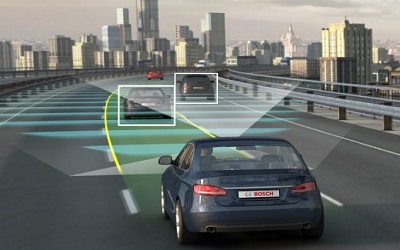当所有汽车都不再需要司机就能自动行驶,驾照交规红绿灯都还有什么卵用?酒驾和交通事故都将不复存在?!在这篇满分科技文里,墨尔本文波雅思带你探究全自动驾驶技术的发展,学习最标准的学术词汇表达,为你的亮点素材添砖加瓦。
The Future of Driverless Vehicles
Three years ago, Nissan was the first car manufacturer to announce they would have driverless vehicles ready for consumer adoption (被消费者采用)by the year 2020. While consumers, and even some experts in the field, noted that this was an aggressive timeline, it didn’t seem like an unattainable(做不到的) goal. Void of (没有,缺乏)personal and professional opinions, this announcement did a great service for the driverless vehicle industry, promoting awareness of this emerging technology(科技类满分表达,提升了对某个新兴技术的意识,用词搭配准确). Awareness is one of the most important elements in driving this industry forward — consumers aren’t going to trust what they don’t know, even if the technology has been validated(通过验证的).
In late August, IEEE —the world’s largest professional organization of engineers — hosted a roundtable(圆桌会议) at the University of Southern California to discuss the current condition and future development of the autonomous (自主的,无人驾驶同义替换)vehicle industry. The roundtable featured experts from a variety of disciplines, including technology, policy/regulation and law, where we addressed comprehensive industry considerations.
One area that is continuing to grow and will play a large role in (主语从句加并列)the further development of autonomous vehicles is Vehicle-to-Vehicle (V2V) and Vehicle-to-Infrastructure (V2I) communications.
Currently, self-driving vehicles are guided by computer vision technology — whether it’s Lidar/Ridar (laser or radar (激光或雷达)technology) or camera-based sensing — when operating on public roads. However, V2V and V2I are communication methods that will completely transform how vehicles will “see” the road and interact with its environment. Both V2V and V2I are dedicated short range communications (DSRC) devices that work in the 5.9GHz band, have a range of approximately 1000m and can support private data communications as well as public (宾语从句并列).
At the rate the industry is moving(根据目前行业发展的速率), we’ll start to see V2V/V2I become integrated and tested in controlled settings within the next three to five years, but the technology will require constant evaluation before being available to consumers. Although driverless cars will be on the market by 2020, they will not be able to leverage (利用)V2V or V2I until a few years later.
V2V and V2I communications will have large-scale benefits that reach beyond the vehicle. Such communication practices will allow for much safer travel by allowing vehicles to be in constant communication with each other as well as their environment(所有车和环境互相联网交换信息), which will greatly reduce accidents and fatalities(灾祸,意外死亡). Last May, the Associated Press reported on a National Highway Traffic Safety Administration study that found traffic accidents cost the US $871 billion a year — these communication platforms can greatly reduce this number. As a result, traffic patterns and road congestion will also be aided (被帮助改善)and vehicles will be able to travel at a much faster rate of speed and eventually render (致使)traffic signals irrelevant(“没卵用”的翻译- -!).
Key to implementation will be a high penetration rate (渗透率)of vehicles able to communicate with each other. This will enable self-driving cars to access further data and information regarding their environment, and will work in harmony with (协调一致)already available sensing technology (radar or video cameras). For example, when a vehicle is coming up to a blind intersection, a vehicle in the perpendicular direction (垂直方向)could alert other vehicles to whether it will be able to stop as a signal changes.
The next five years will be important in addressing concerns and barriers to the implementation of V2V and V2I. In August, the National Highway Traffic Safety Administration (NHTSA) issued a release that announced proposed rule-making and an initial analysis of V2V communication. The agency’s primary concerns were technical feasibility(技术可行性), privacy/security, estimates of cost and safety benefits. Like driverless vehicles, communication standards will take some time to gain consumer trust(获得消费者信任), but eventually they will make their way into the mainstream (打入主流)to complement the progress of this industry.
更多新奇内容尽在墨尔本文波雅思!





